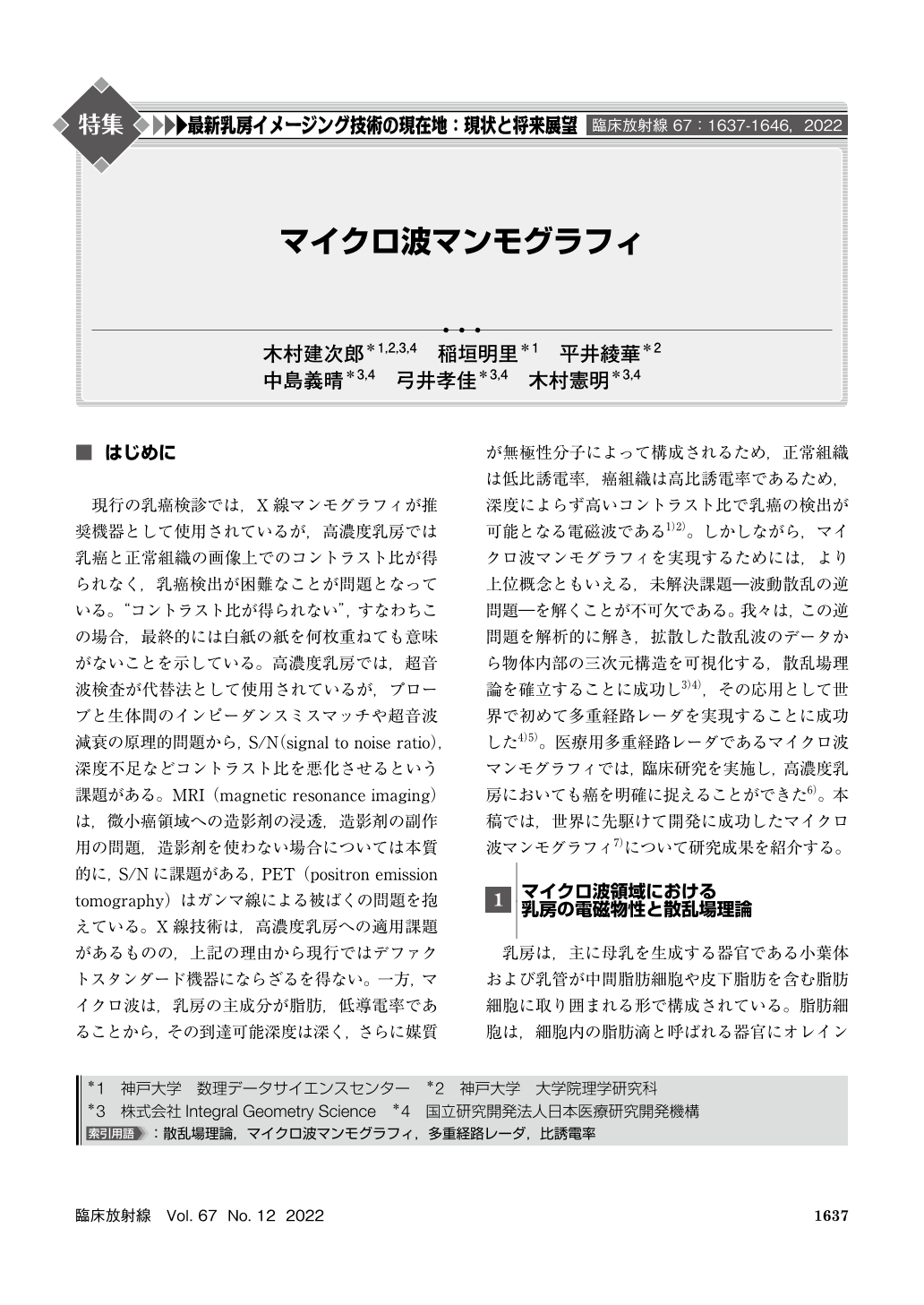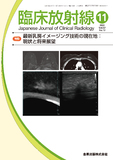Japanese
English
- 有料閲覧
- Abstract 文献概要
- 1ページ目 Look Inside
- 参考文献 Reference
現行の乳癌検診では,X線マンモグラフィが推奨機器として使用されているが,高濃度乳房では乳癌と正常組織の画像上でのコントラスト比が得られなく,乳癌検出が困難なことが問題となっている。“コントラスト比が得られない”,すなわちこの場合,最終的には白紙の紙を何枚重ねても意味がないことを示している。高濃度乳房では,超音波検査が代替法として使用されているが,プローブと生体間のインピーダンスミスマッチや超音波減衰の原理的問題から,S/N(signal to noise ratio),深度不足などコントラスト比を悪化させるという課題がある。MRI(magnetic resonance imaging)は,微小癌領域への造影剤の浸透,造影剤の副作用の問題,造影剤を使わない場合については本質的に,S/Nに課題がある,PET(positron emission tomography)はガンマ線による被ばくの問題を抱えている。X線技術は,高濃度乳房への適用課題があるものの,上記の理由から現行ではデファクトスタンダード機器にならざるを得ない。一方,マイクロ波は,乳房の主成分が脂肪,低導電率であることから,その到達可能深度は深く,さらに媒質が無極性分子によって構成されるため,正常組織は低比誘電率,癌組織は高比誘電率であるため,深度によらず高いコントラスト比で乳癌の検出が可能となる電磁波である1)2)。しかしながら,マイクロ波マンモグラフィを実現するためには,より上位概念ともいえる,未解決課題―波動散乱の逆問題―を解くことが不可欠である。我々は,この逆問題を解析的に解き,拡散した散乱波のデータから物体内部の三次元構造を可視化する,散乱場理論を確立することに成功し3)4),その応用として世界で初めて多重経路レーダを実現することに成功した4)5)。医療用多重経路レーダであるマイクロ波マンモグラフィでは,臨床研究を実施し,高濃度乳房においても癌を明確に捉えることができた6)。本稿では,世界に先駆けて開発に成功したマイクロ波マンモグラフィ7)について研究成果を紹介する。
The conventional technique for breast cancer screening is X-ray mammography;however, many young women have dense breasts making the breast cancer detection difficult. Microwave Mammography is well-suited for detecting breast cancers owing to the fact that normal tissues have low relative permittivity and breast cancers have higher one in microwave-region, and electrical conductivity in whole breast is low even if dense breasts. In order to realize microwave mammography, essential problem about how to reconstruct the three-dimensional image of the scatter from measurement data of scattering wave should be solved. Recently, we have established scattering field theory, that is an analytical solution for the inverse scattering problem, and successfully developed a multi-static radar for the first time in applied mathematics and radar history. We have applied this technology to breast cancer imaging in clinical research.

Copyright © 2022, KANEHARA SHUPPAN Co.LTD. All rights reserved.


